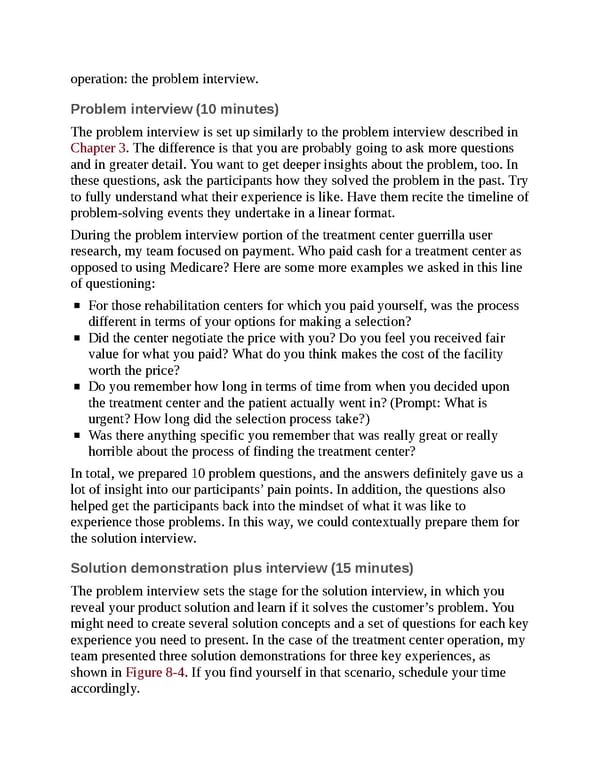operation: the problem interview. Problem interview (10 minutes) The problem interview is set up similarly to the problem interview described in Chapter 3. The difference is that you are probably going to ask more questions and in greater detail. You want to get deeper insights about the problem, too. In these questions, ask the participants how they solved the problem in the past. Try to fully understand what their experience is like. Have them recite the timeline of problem-solving events they undertake in a linear format. During the problem interview portion of the treatment center guerrilla user research, my team focused on payment. Who paid cash for a treatment center as opposed to using Medicare? Here are some more examples we asked in this line of questioning: For those rehabilitation centers for which you paid yourself, was the process different in terms of your options for making a selection? Did the center negotiate the price with you? Do you feel you received fair value for what you paid? What do you think makes the cost of the facility worth the price? Do you remember how long in terms of time from when you decided upon the treatment center and the patient actually went in? (Prompt: What is urgent? How long did the selection process take?) Was there anything specific you remember that was really great or really horrible about the process of finding the treatment center? In total, we prepared 10 problem questions, and the answers definitely gave us a lot of insight into our participants’ pain points. In addition, the questions also helped get the participants back into the mindset of what it was like to experience those problems. In this way, we could contextually prepare them for the solution interview. Solution demonstration plus interview (15 minutes) The problem interview sets the stage for the solution interview, in which you reveal your product solution and learn if it solves the customer’s problem. You might need to create several solution concepts and a set of questions for each key experience you need to present. In the case of the treatment center operation, my team presented three solution demonstrations for three key experiences, as shown in Figure 8-4. If you find yourself in that scenario, schedule your time accordingly.
 UX Strategy: How to Devise Innovative Digital Products that People Want Page 225 Page 227
UX Strategy: How to Devise Innovative Digital Products that People Want Page 225 Page 227